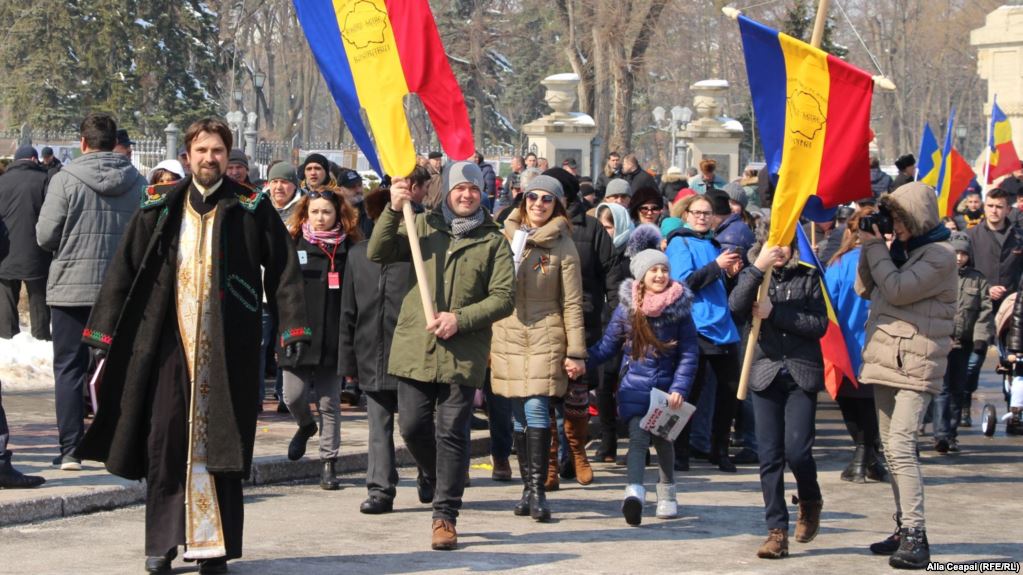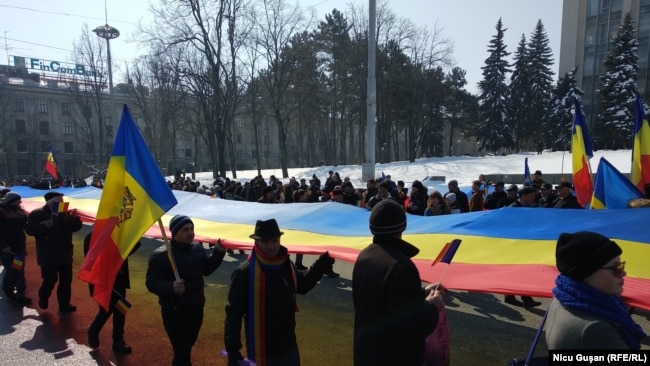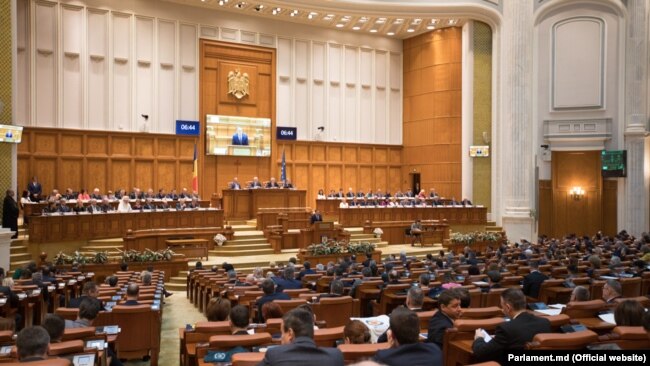
By Polygraph
“Romania is preparing a Maidan to destroy Moldova,” read the headline in the popular Russian newspaper Vzglyad on March 16, 2018.
“Maidan” is a reference to Independence Square in Ukraine’s capitol Kyiv, the site of the key protests that brought down the country’s pro-Russian president, Viktor Yanukovych, in 2014. In Russia, “Maidan” has a negative connotation, while in the rest of the world it is the symbol of Ukraine’s pro-European uprising.
The article in Vzglyad.ru predicted chaos, mass violence and the takeover of Moldova’s government by ultra-nationalists, leading to civil war. All that was supposed to begin during the commemoration of the 100th anniversary of the historic pact between Moldova and Romania, which took place in Moldova’s capitol Chisinau on March 25.
None of that happened: the gathering was peaceful, and Moldova remains sovereign nine months later.
But the Russian newspaper was not just mistaken: Moldovan experts say it deliberately tried to create an alternative reality, with the aim of inflicting panic and confusion.
The Day of the “Moldovan Maidan”
According to the Moldovan police, about 7,000 people gathered in Chisinau’s Great National Council Square on March 25, 2018 to celebrate the Great Centennial Assembly (Marea Adunare Centenară) and demonstrate their support for the reunification of Romania and Moldova.
The rally lasted three hours, during which the police reported one incident: a group of young people were detained for wearing gas masks while heading towards the gathering.
Prominent Moldovan and Romanian politicians attended. A symbolic “declaration of reunion” was read to the public at the end of the rally, for which the attendees unanimously voted “yes.” Then the “Maidan” was over.
What is “Marea Adunare Centenară”
“Marea Adunare Centenară” – The Great Centennial Assembly — commemorates the joining of several Moldovan regions with Romania in 1918. Bessarabia joined Romania in March 1918; Bukovina joined in November 1918; the Transylvania, Crisana, Banat and Maramures areas joined on December 1, 1918. The events are celebrated in Romania as National Day annually on December 1.
In 1940, Romania accepted the demands of Soviet dictator Josef Stalin to turn Moldova over to the USSR. After the collapse of the Soviet Union in 1991, Moldova regained its sovereignty.
However, the idea of unification with Romania remains popular in Moldovan society, and supporters of the idea are referred to as “unionists.” The unionists organized and held a 100th anniversary meeting in 2018.
In Moldova, more than 100 towns and districts signed a symbolic declaration of reunion with Romania. However, the document has no legal merit, and does not affect relations between the two nations, Romania’s Foreign Minister Theodor Meleshkanu said.
Not everybody in Moldova supports the unionists’ platform. Some oppose the idea, and others see Moldova moving forward as an independent state with no foreign interference. The ethnic Russian population in Moldova has not taken any united public stance either for or against a union with Romania.
The Language of Manipulation
Russian media, however, predicted with certainty that the 2018 “Marea Adunare Centenară” will lead to “mass unrest;” the seizure of the parliament by rioters, most of whom would be ultra-nationalists and soccer hooligans; and, eventually, to the demise of Moldova as a sovereign state.
The Vzglyad article in March, for instance, predicted a “civil war” in Moldova that was to begin in ten days.
“What is this – an empty threat or a new political reality, meaning a new civil war with an imminent Russian intervention?” the article’s author asked.
None of this happened. Still, the “prognosis” made its way from the Russian newspaper to Moldovan social platforms and media. A similar information campaign was waged in Transnistria, the breakaway Moldovan region whose separatist government enjoys Russia’s political and military support.
By Polygraph
This article written by a Moldovan journalist Denis ROMANESCU who was on a fellowship at the Polygraph.info, Voice of America’s fact-checking unit.







